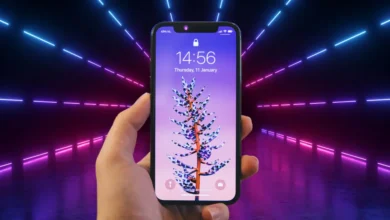
Foldable Phones Future: The Next Leap in Mobile Tech
I still remember the first time I saw someone unfold their smartphone like a book — it was a Samsung Galaxy Z Fold, and the reaction on my face was probably similar to when I first held an iPhone back in 2007. That was my “wow” moment, and it got me thinking: maybe foldable phones aren’t just a cool gimmick — maybe foldable phones future is real, and it’s happening faster than we expected. With the benefits of foldable phones becoming clearer, the evolution of foldable smartphone technology, and a surge in next-gen mobile devices, we’re entering an era of truly innovative phone designs that could reshape the future of smartphone industry as we know it.
Foldable Phones Are No Longer a Sci-Fi Dream
Let’s be honest — a few years ago, the idea of folding your phone screen seemed like something ripped from a Marvel movie. But today? It’s our reality. Major players like Samsung, Huawei, Oppo, and now even Apple are either deep in the game or gearing up to make their move. And when Apple joins a trend, we all know it’s more than a fad.
Foldable phones now boast foldable smartphone technology that supports flexible OLED displays, durable hinges, and multi-angle folding capabilities. These aren’t fragile toys anymore. They’re powerful devices designed to work hard and look good doing it.
Foldable phones future-The Real Benefits of Foldable Phones
You might be wondering, beyond the “wow factor,” what’s so special about foldables? The benefits of foldable phones go beyond their flashy design.
For starters, they offer dual functionality: you can use them like a phone and a tablet. Imagine editing a presentation or watching Netflix on a compact device that opens up into a 7.6-inch screen. That’s versatility on another level.
They also improve productivity. Split-screen multitasking becomes more intuitive and functional — like replying to emails on one half while referencing a document on the other. For busy professionals and digital nomads, that’s a dream setup.
The foldable phone gives me laptop-level multitasking in my pocket,” says Maria, a UX designer and remote worker. “It changed the way I work on the go.
Foldable phones future-A Shift in Consumer Behavior
As more users experience these perks, their expectations are shifting. People are beginning to prefer next-gen mobile devices that adapt to their needs — not the other way around.
It’s similar to the transition from physical keyboards to touchscreens. At first, everyone was skeptical. Now, can you imagine going back? Foldable phones future are heading down the same path. Users are craving adaptability, and innovative phone designs like these are answering the call.
According to a 2025 Gartner report, foldable phone shipments are expected to cross 30 million units this year — a 48% increase from 2024. That’s not just growth — it’s momentum.
The Tech Behind the Magic
What makes all this possible? It’s the continuous development in foldable smartphone technology. Flexible ultra-thin glass, water-drop style hinges, and improved software optimization are at the heart of these devices. Brands are collaborating with app developers to ensure their apps transition seamlessly between folded and unfolded states.
And let’s not forget the battery technology. Foldable phones future are now fitted with dual battery systems that balance power and maintain battery life across two screen formats.
Real-World Example:
Take the Honor Magic V2. It’s one of the thinnest foldables on the market and folds completely flat — a huge milestone in innovative phone designs. And it’s not just a pretty face. With a Snapdragon 8 Gen 2 chip and 5,000mAh battery, it’s as powerful as any flagship phone.
The Future of Smartphone Industry Is Flexible
Let’s talk about the bigger picture — the future of smartphone industry. What does it look like?
Flexible screens won’t just stop at foldables. We’re already seeing early concepts of rollable phones, stretchable screens, and dual-display phones that hint at the next evolution in next-gen mobile devices. The idea is to create tech that conforms to human behavior, not the other way around.
With more competition entering the space, prices are dropping, and foldables are slowly becoming more accessible. Soon, foldables may not be a premium niche — they could be the default.
Consumer Trust Is Rising
Early foldables had issues — screen creases, hinge problems, high prices — but brands have learned fast. With each new release, we see improved durability, water resistance, and better user interfaces. And consumers are noticing.
The increased reliability has helped build trust, leading to more adoption and positive feedback. This is pushing developers to further invest in optimizing apps for Foldable phones future, fueling a stronger ecosystem.
Foldables are where smartphones meet innovation head-on,” says Ravi Mehta, a tech analyst. “The flexibility they offer isn’t just in hardware, it’s in how we live and work with our devices.
A Greener Tech Option?
Interestingly, many don’t talk about how foldables can support sustainability. One of the lesser-discussed benefits of foldable phones is that they reduce the need for multiple devices.
Instead of buying a tablet and a phone, you can buy one foldable that does both jobs. Fewer devices mean less electronic waste, which is a step forward in making next-gen mobile devices more environmentally conscious.
Why You Should Care
You might not be ready to buy a foldable phone tomorrow — and that’s okay. But understanding where the industry is going helps you stay ahead.
Foldables aren’t about being flashy; they’re about being functional in a smarter way. From foldable smartphone technology improvements to increasing affordability, everything is aligning to make these devices mainstream.
If history has taught us anything, it’s that when technology starts solving real problems — portability, productivity, and personalization — it doesn’t just stay. It dominates.
Final Thoughts
Foldables are not a passing trend. They’re a clear signpost pointing toward the foldable phones future. With an increasing number of innovative phone designs, ongoing evolution in foldable smartphone technology, and growing consumer demand for next-gen mobile devices, the foldable revolution is already here.
As we look forward, it’s easy to see how the benefits of foldable phones will become not just “nice to have,” but essential. The future of smartphone industry is no longer flat. It’s foldable, flexible, and full of potential.



